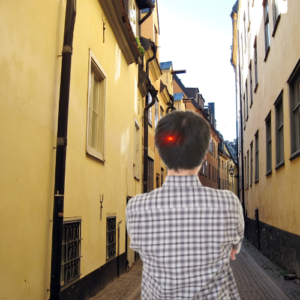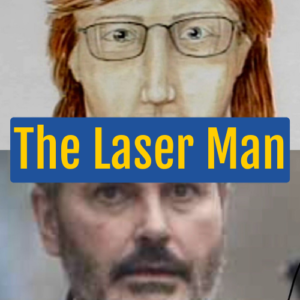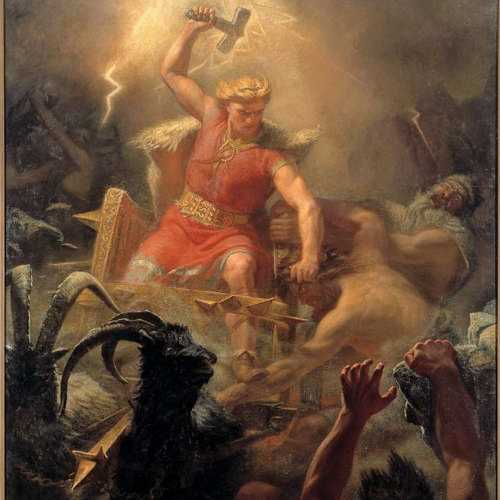Between August 3rd, 1991, and November 8 the same year 5 different shootings took place in Stockholm. All of them seemed to have the same perpetrator since they all indicated a red dot on the victims before being shot, like from a laser sight, and they all seemed to be targeting immigrants. The four first victims survived, but the 5th died the day after the incident.
After this, no more shootings occurred until January 22nd, 1992, when the shooting spree started again, and between January 22 and January 30 where five additional shootings with the same MO occurred, one in Uppsala and the others in Stockholm.
The perpetrator was quickly named lasermannen, The laser man, by the media.
I myself was living in central Stockholm at the time, 0.4 miles from where one of the November shootings took place, and I like so many Swedes were terrified. So today we are going to take a look at who the laser man is, what lead up to these crimes, the aftermath, and where he is today. I hope you will enjoy it.
Who is he?

John Wolfgang Alexander Ausonius (born Wolfgang Alexander Zaugg, 12 July 1953), known in the media as Lasermannen (“the Laser Man”), is a Swedish far-right extremist convicted of murder and bank robberies
Ausonius was born Wolfgang Alexander Zaugg in Lidingö, northeast of Stockholm, Sweden. He is the son of a Swiss father and a German mother, both of whom had emigrated to Sweden. He grew up in Vällingby, a working-class suburb of Stockholm. According to newspaper reports, he was bullied as a child because of his non-Swedish background, which manifested in him being teased for having very black hair and brown eyes. As an adult, he bleached his hair blonde, used blue contact lenses, and legally changed his name. Initially, he changed his name to John Wolfgang Alexander Stannerman, and later to John Wolfgang Alexander Ausonius. He went to the German School in Stockholm, a private school, but dropped out before graduating. He later completed his secondary school education in an adult education program. Ausonius was accepted into the Royal Institute of Technology but dropped out after a couple of years of unsuccessful study.
Ausonius, who himself had become a Swedish citizen in 1979, had an extreme hatred for foreigners and immigrants, which led to his path of becoming a killer. These beliefs led him to start looking for immigrant criminals to kill. Eventually, he was tired of this and decided to simply kill any immigrant. He hoped that this way, he would scare all immigrants out of Sweden.
In 1986, following the Olof Palme assassination, Ausonius, then named John Stannerman, was one of the police’s initial suspects. However, Stannerman could not be linked to the murder as he was incarcerated at the time, serving a sentence for multiple counts of assault.
Ausonius developed a hatred for Communists, Social Democrats, and immigrants while developing an ambition of gaining wealth. He worked a low-paying job as a taxi driver but later started trading in stocks and bonds. His talent for the market quickly earned him a fairly large fortune, resulting in him adopting the yuppie lifestyle. By the late 1980s, he owned a luxurious apartment, a Toyota Supra (rather than owning a Porsche, as he despised the company), and a mobile phone (before the 1990s, such a device was a luxury item usually associated with a jet-set lifestyle). However, poorly chosen investments depleted his fortune.
This was further aggravated by an addiction to gambling. As a result of the latter, during a trip to Germany, he found himself in dire economic circumstances. With funds running out, Ausonius turned to bank robbing to maintain his lifestyle. He performed more than eighteen robberies, largely in identical fashion.
The Shooting Spree
Between 1981 and 1982, Ausonius served in the Swedish army and thus learned how to use weapons. However, his personal weapons were of poor quality, very likely because Ausonius had modified them. He sawed off the barrel and the stock of his first rifle to make it shorter, and he fitted the Smith & Wesson revolver with a silencer. This modification may have been the key to his failure in killing most of his victims as it deviated from the bullet’s trajectory and consequently caused him to miss his victims. It was amateurishly done and damaged the weapon’s performance.

So let’s take a look at the actual shooting spree date by date.
3 August 1991: Ausonius shot David Gebremariam, a 21-year-old immigrant from Eritrea. Gebremariam was shot in the back but survived. Two of the victim’s friends said they saw a circle of red light on his body before they heard the shot. After this incident, it was quiet until
On the evening of 21 October 1991, outside the Stockholm University, Shahram Khosravi, a 25-year-old student of Iranian origin, was shot in the face but survived.
On the night of 27 October 1991, Dimitrios Karamalegos, a homeless man of Greek origin was shot twice in the stomach. The victim saw a bright red light, and heard the shots but managed to run away. Although wounded, he survived.
In the middle of the day of 1 November 1991, Ausonius walked into a restaurant kitchen in Stockholm where he had seen an immigrant and shot him once in the head and several times in the stomach. The victim, Heberson Vieira Da Costa, a musician from Brazil, saw a red light before he was shot, and got a good look at his assailant. The victim survived, seriously wounded, but was able to give a description of the Laser Man to the police.
Ausonius continued his shootings and, on 8 November 1991, he mortally wounded Jimmy Ranjbar, another Iranian student, who died the next day.
Ausonius then went to Las Vegas to gamble and visit the Grand Canyon. The Laser Man disappeared for a few months, but he would return.
On 22 January 1992, Ausonius went to Uppsala, where he walked up to a couple and shot the man in the head. The victim, Erik Bongcam-Rudloff, was a Ph.D. student in medical sciences. He survived and is now a scientist representing Sweden in several international scientific networks.
23 January 1992, back in Stockholm, Ausonius shot Charles Dhlakama, a black bus driver, originally from Zimbabwe, in the middle of the day. The victim was shot in the chest but survived. That evening, Ausonius walked into a Somali club in central Stockholm and shot two men, both of whom also survived.
On the night of 28 January 1992, Ausonius walked up to a kiosk where Isa Aybar, an immigrant of Turkish origin, was working. Ausonius shot him four times in the head and arm and walked away. Aybar was seriously wounded but managed to call the police and survived.
On 30 January 1992, Ausonius shot Hasan Zatara in the head, a Palestinian store owner, in Hägerstensåsen, paralyzing but not killing him.
The chase, capture, and conviction
The police investigation had difficulty calling in a perpetrator because Ausonius had no ties to the victims. A breakthrough came when the police began investigating the information that a white Nissan Micra SLX had been seen during the shots on January 22-23, 1992. The police, therefore, began to contact all owners of that car brand. Ausonius had rented such a car from a car rental company in Stockholm under his real name, but when the police tried to contact Ausonius for routine questions, they discovered that neither the address nor the telephone number was correct. On February 25, a summons was sent for questioning to a mailbox believed to have been used by Ausonius. However, Ausonius followed the news reporting and when it became clear that the police were interested in a certain type of car, he left Sweden at the end of February and went to South Africa. He did not return until mid-May.
In March, the police had thus still not had the opportunity to ask routine questions to Ausonius about the car he had rented in January. It was also clear to the police that Ausonius had a long criminal record. One of the police investigators had participated in the investigation into the Palme murder and had then heard about John Stannerman (Ausonius’ former name), a well-known Palme hater who previously worked as a cinema machinist at the Grand cinema on Sveavägen, where Olof Palme and his wife had watched a movie before he was murdered. This had then been mapped and it was clear that Ausonius’ profile was of great interest to the investigation. However, Ausonius was in Kumla Prison at the death of Prime Minister Olof Palme, convicted of several violent crimes, and could be quickly removed from that investigation.
During the course of the investigation, the police had also discovered that Ausonius was a customer of several pawnshops. At the same time, a mysterious bicycle robber had managed to rob 17 banks in Stockholm without being arrested. By comparison, the police were soon able to establish that Ausonius had redeemed his things from the pawnshop immediately after the bicycle robber robbed a bank.
When Ausonius returned to Sweden, he went to the post office to empty his mailbox and in this way, the police found out that he was in Stockholm. As the police did not know his address, it was decided that the reconnaissance Rotel would spy on him. It was known that Ausonius rented video films in a video store at the intersection of Roslagsgatan – Odengatan, and when Ausonius came there to return the films, the police followed suit and were able to establish that Ausonius lived on Ynglingagatan in northern Vasastaden.
The next day, June 12, Ausonius left home in the morning. He cycled to Södermalm, changed clothes at a gate, and in front of the police scouts he carried out his eighteenth bank robbery at Handelsbanken on Hornsgatan. When the police tried to arrest him, gunfire erupted, but shortly afterward Ausonius was overpowered outside the property Heleneborgsgatan 6-8, where he hid clothes in the basement of the house.
When the police called for the Laser Man, a phantom image was prescription given by one of the Laserman’s victims. The picture showed a man with red hair and glasses. He had changed his appearance to look more Swedish (dyed his hair red, got blue contact lenses). When Ausonius had since been arrested, pictures were shown of him where he was instead dark-haired, lacked glasses, and had a large full beard during his detention.

On December 1, 1993, Ausonius was sentenced by the Stockholm District Court to life imprisonment for his denial of murder, nine attempted murders, and three bank robberies. He was acquitted of two of the assassination attempts. When the case was taken up by the Svea Court of Appeal, the process was complicated when Ausonius on October 4, 1994, abused his two defense lawyers at the Kronoberg Detention Center. The lawyers resigned and Ausonius got two new lawyers. When the trial resumed on January 31, 1995, Ausonius abused his two defense attorneys, Kerstin Koorti and Paavo Fagerlund, before members of the court. TV pictures show Koorti coming out of the courtroom with the blood running down his forehead. The court did not allow Ausonius to change defenders once again, but he was allowed to sit with handcuffs. On May 19, 1995, the Court of Appeal upheld the sentence of life imprisonment. However, the Court of Appeal acquitted Ausonius of one of the robberies. Between 2001 and June 2012, he served his sentence at Kumlaanstalten. In June 2012, he was transferred to Österåkeranstalten, but later the same year served his sentence at the institution Storboda.
In August 2000, Ausonius admitted that he was guilty of all 10 assassinations and in addition 20 bank robberies or attempted bank robberies. However, the Supreme Court held that the confessions, due to Ausonius’ low credibility, were not sufficient grounds for a rescission of the acquittals.
On December 21, 2010, Örebro District Court rejected John Ausonius’ application to have his life sentence fixed.
In October 2012, John Ausonius had for the third time applied, which was denied by the court on November 2, 2012.
In May 2020, Ausonius again applied and was denied.
To make this clear, in Sweden life imprisonment is of indeterminate length. A prisoner may apply to the government for clemency, commuting the life sentence to a set number of years.
A second life sentence
In 2016 Ausonius was extradited to Germany to face trial for the 23 February 1992 murder in Frankfurt of Blanka Zmigrod, a 68-year-old Holocaust survivor. While German police were investigating the murder they discovered ties to the National Socialist Underground, a far-right neo-Nazi terrorist organization. Which in turn led them to Ausonius.
On 8 February 1992, while on the run from Swedish police, Ausonius visited a restaurant in the city’s Opernplatz square. Two weeks later he returned, accusing cloakroom attendant Blanka Zmigrod of having stolen an electronic Casio notebook from his pocket.
An altercation ended with Ausonius shouting “we will meet again” at Zmigrod as he left the restaurant. The following night, the 68-year-old was shot from close range by a hooded cyclist as she walked home from work.
Zmigrod had been a prisoner at four concentration camps, including Auschwitz and Bergen-Belsen, and survived several of the infamous “death marches”.
After the war, she met fellow Holocaust survivor Sacha Feldman in Tel Aviv, and in 1960 the couple later moved back to Germany to run restaurants and hotels. Swedish police investigator Stefan Bergquist has said Ausonius smiled and appeared happy when informed during questioning in 1993 that Zmigrod had Jewish ancestry.
Ausonius has confirmed that he used to possess the same type of Browning pistol and ammunition used in the murder but denies shooting Zmigrod.
German prosecutors sought a life sentence, pointing to the severity of the crime to justify exceeding the usual maximum term of 15 years on the grounds of protecting society.
Having now received life terms in two countries, Ausonius is considered almost certain to spend the rest of his life locked up without parole.
John Ausonius has now been extradited to Sweden. Today, John Ausonius is serving a double life sentence – both for the murder in Sweden and for the murder in Germany. He is now admitted to the Storboda institution, which is located just outside Rosersberg north of Stockholm.





